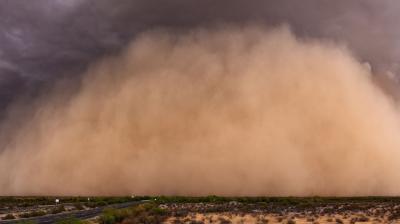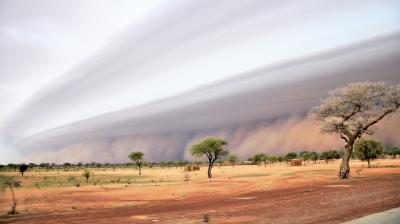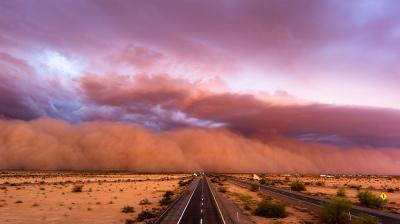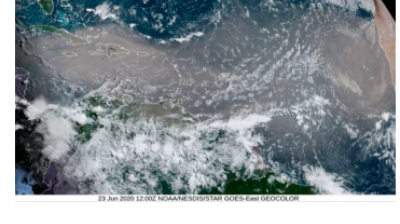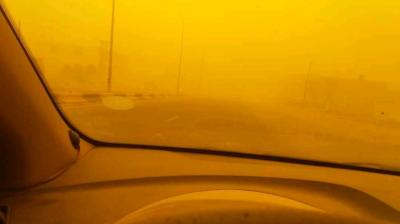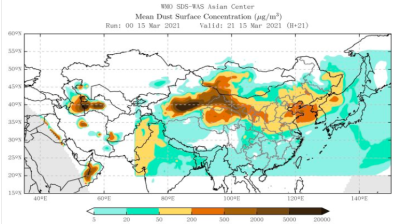WMO highlights efforts to tackle sand and dust storms
The World Meteorological Organization is supporting the first ever International Day of Combating Sand and Dust Storms to draw attention to the significant impacts on the environment, socio-economic well-being and health. It coincides with another major intrusion of Saharan dust into the Mediterranean and across the Atlantic to the Caribbean.
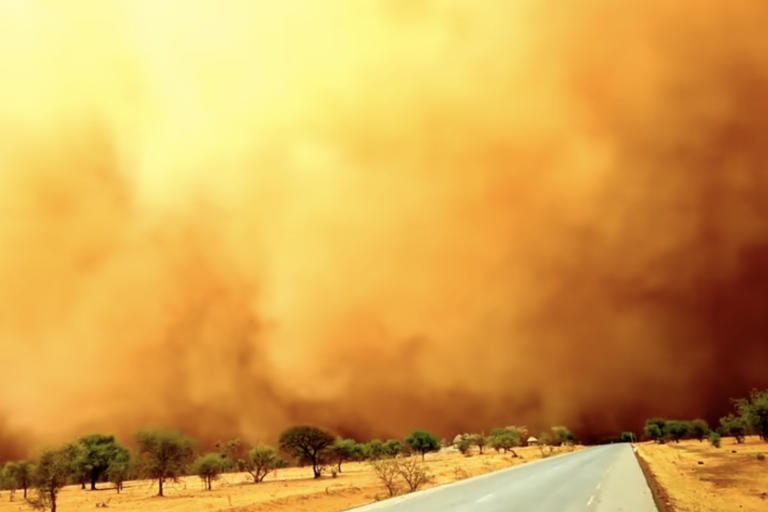
When winds are strong, large amounts of sand and dust are lifted from bare, dry soils into the atmosphere. Mineral dust particles are transported downwind, affecting regions hundreds to thousands of kilometres away. These particles affect climate, weather, atmospheric chemistry, and ecosystems.
The United Nations General Assembly in June adopted a resolution establishing 12 July as the annual event in order to increase global and regional cooperation to manage and mitigate the effects of sand and dust storms. It recognizes that sand and dust storms are issues of international concern, negatively affecting the achievement of 11 of the 17 Sustainable Development Goals.
The resolution recognizes that climate change is an important potential contributor to future wind erosion, increasing the risk of sand and dust storms in the future and thus impacting the health of millions of people and with potential economic costs of billions of dollars.
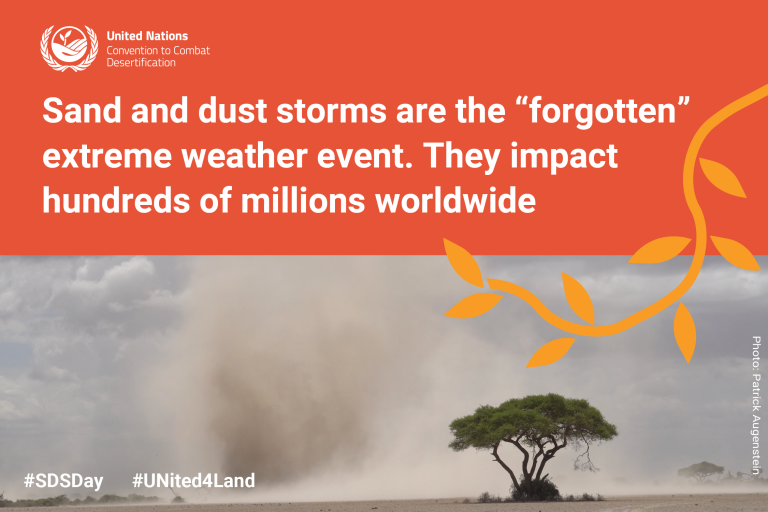
“We need to increase efforts to mitigate the negative effects of dust storms,” WMO Secretary-General Prof. Petteri Taalas said in a video message to a high-level event at the UN in New York organized by the Permanent Missions of Iran, Iraq and Senegal – one of a series of activities involving WMO.
WMO established a Sand and Dust Storm Warning Advisory and Assessment System (SDS-WAS) in 2007.
Its mission is to support timely and high-quality sand and dust storm forecasts, observations and knowledge to users through an international partnership of research, operational and user communities.
"This collaborative international framework facilitates the transfer of technology and knowledge from research to user-tailored services for the good of society,” said Prof. Taalas.
“These operational efforts are needed for supporting the implementation of Early Warning Systems and achieving the goal of Early Warnings for All by the end of 2027,” said Prof. Taalas.
Regional Forecast Centers
WMO has operational dust forecast services through Regional Specialised Meteorological Centers.
One regional center is in Beijing (China) covering Asia. Central Asia, where more than 80% of the land is covered by deserts and steppes, is especially vulnerable to dust from the Aral Sea basin. The Gobi desert in northern China and Southern Mongolia is another major source.
Another WMO regional centre is in Barcelona (Spain) and covers Northern Africa, the Middle East and Europe.
The Barcelona Dust Center produces operational forecasts which are readily accessible on a public website. It has helped develop tailored products for African countries and build capacity to use and disseminate the warnings and forecasts. There is an increasing need for accurate information and predictions, particularly over desert regions, such as Sahara and the Middle East, in order to support the development of early warning systems and mitigation plans.
The importance of its work was highlighted this week by a dust intrusion across the Mediterranean Sea, impacting in particular Spain which is also suffering from a heatwave.
Particulate matter forecasts from the EU’s Copernicus Atmosphere Monitoring Service said the dust would impact the air quality in most of the western Mediterranean, especially Spain, where high surface PM10 are predicted to cover much of the country. It peaked in area on 11 July and also impacted parts of Italy and southern France.
In the most affected regions, PM10 will exceed the 24- hour mean exposure threshold of 50 µg/m3 established for the European Union for this kind of pollutant.
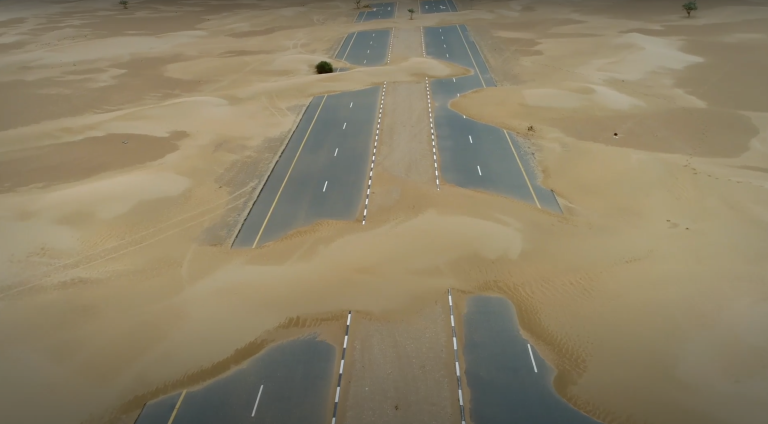
Additionally, long-range transport of Saharan dust across the Atlantic Ocean has been reaching the Caribbean and is predicted to continue in the coming days. The CAMS forecasts show a particularly thick plume developing over the Canary Islands with Calima winds later in the week.
Sand and Dust Storms Compendium
Tackling the negative effects of dust storms requires more work. The limited integration of quantitative dust information and forecasts into practice and policy is often due to a lack of understanding of the precise impact of storms on certain sectors.
Other factors include the need for products tailored to specific applications; the lack of awareness, understanding, capacity or structures in place to use the information; and the overall challenge of incorporating uncertain information or forecasts into management practices.
WMO is therefore working with a wide range of UN partners to strengthen the response to sand and dust storms, including with the World Health Orgnaization, Food and Agriculture Organization, the UN Environment Programme. It supports the Sand and Dust Storms Compendium overseen by the UN Convention to Combat Desertification. This provides guidance, tools, and methodological frameworks to aid in monitoring, prediction and early warning; impact mitigation, vulnerability and resilience; and source mitigation.
The SDS Compendium is the most comprehensive summary of state-of-the-art knowledge yet published on these phenomena. It highlights recent concerted efforts by the global community to build the capacity of vulnerable countries to address the impacts.
UNCCD marked the international day by launching a new Sand and Dust Storm Toolbox to help countries to prepare a proactive approach to prevent and cope with sand and dust storms.
To mark the international day, the WMO community organized a series of part in a series of workshops for North Africa and the Middle East, for the Asian region and for its Pan-American network.




